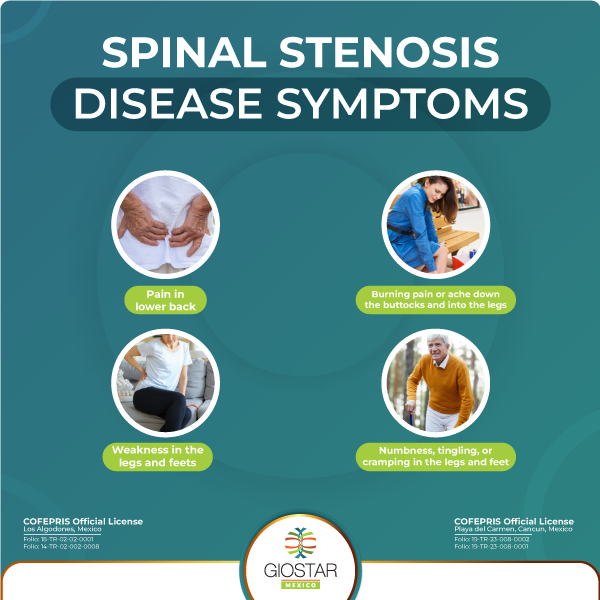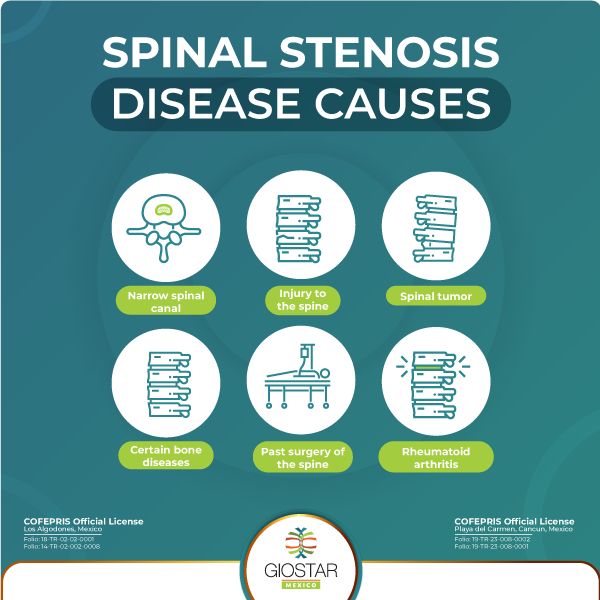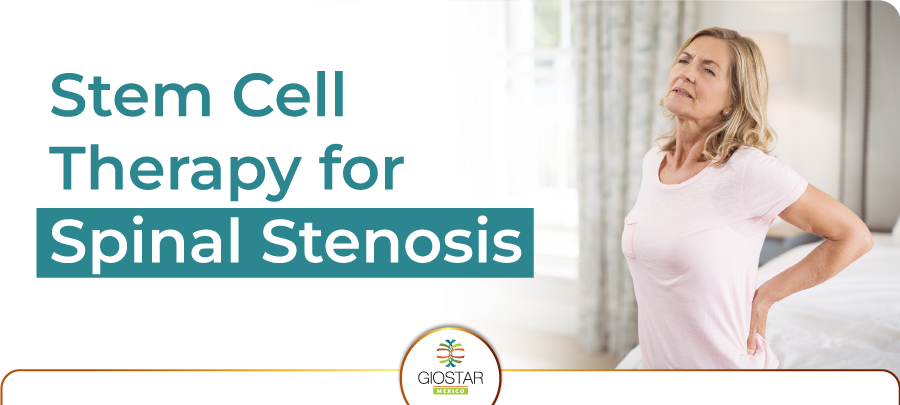What is Spinal Stenosis?
What is spinal stenosis?
Spinal stenosis is a condition that happens when the spaces in the spine narrow and create pressure on the spinal cord and nerve roots. The spinal cord is a bundle of nerves that comes out of the base of the brain and runs down the center of the spine. Nerve roots branch out from the cord, and with spinal stenosis may be pressured which in turn generates pain and discomfort.
Who can develop Spinal Stenosis? Sadly, anyone can develop this condition. As we age, the probabilities of having this condition increase. Spinal stenosis also can be present in younger people who are born with a narrow spinal canal or who have an injury to the spine.
What are the symptoms for spinal stenosis?
Symptoms of spinal stenosis may develop when the spaces within the spine narrow, most often in the lower back and neck. The narrowing creates pressure on the spine and related structures, causing pain and discomfort. For most people, symptoms develop and progress slowly over a period of time, and some patients may not have any.
The symptoms you experience depend on the location of the narrowing in your spine. Symptoms of spinal stenosis in the lower back can include:

What causes spinal stenosis?
The most common cause of spinal stenosis is osteoarthritis, which is the gradual wear and tear that happens to your joints over time. Spinal stenosis is common because osteoarthritis begins to cause changes in most people’s spines by age of 50. That’s why most people who develop symptoms of spinal stenosis are 50 or older. Women have a higher risk of developing spinal stenosis than men.
Besides osteoarthritis, other conditions or circumstances can cause spinal stenosis:

Is there treatment for Spinal Stenosis?
Treatment for Spinal Stenosis depends on: what is causing your symptoms, the location of the problem and the severity of them. If your symptoms are mild, your healthcare provider may recommend some self-care remedies first. If these don’t work and if symptoms worsen, your provider may recommend physical therapy, medication and finally surgery.
Because of the complexity of spinal stenosis and the delicate nature of the spine, surgery is usually considered when all other treatment options have failed. Fortunately, most people who have spinal stenosis don’t need surgery.
Stem Cell Therapy for Spinal Stenosis
Stem cells can regenerate into any type of cell. When used in the treatment for spinal stenosis, stem cells can help repair the damage to the injured or degenerated tissue. In this way, the damaged spinal tissue is repaired, providing powerful pain relief for the patient. Stem cells may be effective in slowing down the progression of the disease and protecting the surrounding tissue from damage.
The benefits to stem cell infiltrations is that they are minimally invasive and not only treat the symptoms but the root causes as well. As a result, it may provide a long-lasting and surgery free solution to the problem.
How much does stem cell therapy cost?
The cost of Stem Cell Therapy needs to be determined by our expert medical team, as prices depend on the specific condition and personalized medical recommendations. Our dedicated team of medical professionals carefully evaluates each patient’s unique health situation to recommend the most effective therapy. Stem Cell Therapy includes the following:
- Laboratory protocol by Dr. Anand (activation of the stem cells to direct them towards the affected tissue or organ)
- 1 – 3 stem cell vials (35 – 105 million stem cells)
- 1 – 10 billion exosomes (volume depends on the doctor’s personal evaluation of each patient)
- Oxygen Therapy
- Body preparation
- Medical Consultation
- Dietitian Follow-up post-therapy
- Transportation hotel-clinic in local shuttle
- Lodging (available in our Clinic in Algodones) at Hotel Hacienda or Hotel Cielito Lindo
- Preferential prices for future reinforcements/applications
References:
- U.S. Department of Health and Human Services. (2021, December 17). Spinal Stenosis. National Institute of Arthritis and Musculoskeletal and Skin Diseases https://www.niams.nih.gov/health-topics/spinal-stenosis
- Lumbar spinal stenosis. Lumbar Spinal Stenosis | Johns Hopkins Medicine. (2022, February 15). https://www.hopkinsmedicine.org/health/conditions-and-diseases/lumbar-spinal-stenosis
- What Is Spinal Stenosis? – Treatment & Surgery. (2020, August 17). Cleveland Clinic. https://my.clevelandclinic.org/health/diseases/17499-spinal-stenosis



